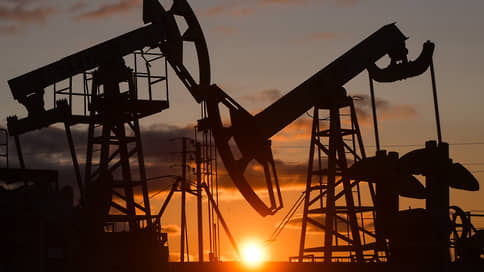Rising oil prices in rubles may not be enough to cover the budget deficit
[ad_1]

The ruble price of Russian Urals oil reached a new four-month high, exceeding the level of 6.6 thousand rubles. per barrel. Confident growth has continued since the beginning of the year, during which time it has risen in price by 18%. If the January growth was caused by an increase in oil prices in the world, then the February growth was caused by a purely currency factor: the depreciation of the ruble. However, analysts believe that in the current Russian economic realities, petrodollars converted into rubles will not cover the budget deficit.
According to Profinance.ru, on February 20, ruble quotes for Urals rose to 6.65 thousand rubles. per barrel, the maximum since November 6, 2023. Even taking into account the correction at the close of trading, the price has risen by 7% since the beginning of the month and by 18% since the beginning of the year. As a result, the average price of Urals for two incomplete months of this year has already amounted to 6.1 thousand rubles. per barrel, exceeding the 2023 average by 12%.
The rise in the ruble price of oil is only partly related to price dynamics on the European market. According to Investing.com, last Friday the price of Brent on the spot market reached $83.85 per barrel, the highest since late January. This week, quotes retreated from the local maximum; on Tuesday they dropped to $82.5 per barrel. Taking into account the correction, they added 1.7% since the beginning of the month and 6.8% since the beginning of the year.
Moreover, this year there has been a reduction in the discount of Russian oil relative to the European benchmark.
The currency price of Russian Urals oil reached $70.6 per barrel, having risen by more than 9% since the beginning of the year and by 2.2% since the beginning of February.
As a result, the spread currently does not exceed $12, having updated its minimum since October last year. “A spread of even $10 per barrel is a powerful incentive for buyers, sellers and traders to supply Russian oil to willing buyers,” says Ronald Smith, senior analyst at BCS World of Investments.
The current high oil prices are supported mainly by geopolitical factors, in particular the ongoing conflict between Israel and Hamas, as well as the almost complete closure of the Red Sea by the Houthis. According to Ronald Smith, high volatility in the oil market cannot be ruled out. “Prices could easily rise to $95 per barrel within a year, for example, if the geopolitical situation worsens, or fall to $65 per barrel if the economic situation in the United States, Europe and China worsens,” the expert notes.
The main reason for the rise in ruble prices in February was the weakening of the Russian currency.
The dollar exchange rate at trading on the Moscow Exchange on February 20 reached 92.66 rubles/$, returning to the values at the beginning of December 2023. PSB chief analyst Denis Popov points out that the recovery in oil prices is accompanied by a decrease in the volume of exports of crude oil and petroleum products from Russia, which neutralizes the influence of price factors on the ruble exchange rate. “Due to the strengthening of secondary sanctions and long holidays in China, local interruptions in the supply of foreign currency in the domestic market arose, which also did not contribute to the strength of the ruble,” the expert notes.
From the point of view of the Russian budget, the current market situation looks more favorable than it was in January. Last month, the budget collected 18% less mineral extraction tax than the average for November-December 2023. According to the head of the department of macroeconomic analysis of Sovcombank Nikita Kulagin, an increase in the price of oil in rubles could bring an additional 90 billion rubles to the treasury, when compared with January 2024.
However, as Vladimir Evstifeev, head of the analytical department of Zenit Bank, notes, the results of one month usually have little effect on the final annual result. Moreover, the 2024 budget is based on the ruble price of Urals in the amount of 6.4 thousand rubles. per barrel, which is still higher than the average price since the beginning of this year. According to Denis Popov, at the end of the year the oil and gas revenue plan may not be fulfilled by only 5%, but the basic oil and gas revenue plan will be fulfilled in full. “Unlike the situation at the beginning of 2023, there are no prerequisites for expanding the budget deficit beyond the 1.6 trillion rubles planned for the current year,” notes Vladimir Evstifeev.
[ad_2]
Source link





